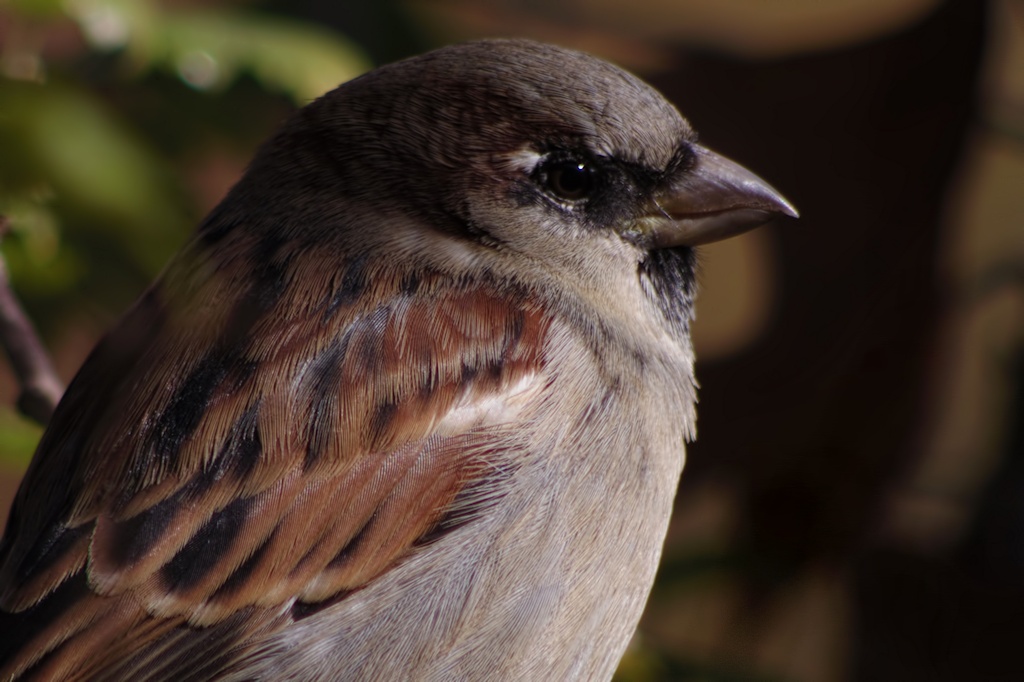 Originally posted by snostorm
Originally posted by snostorm 
Hi Chris,
From my own experience, reinforced by numerous examples posted here, I have to say that this is just not true. There is no way that results shown with the shots using the electronic shutter and 3rd party adapted telephoto lenses could have been done with a virtual 1/7 sec exposure.or anything anywhere close. I think you're confusing the time it takes to dump the entire sensor's information after it takes an exposure with the time it takes to make the exposure.
This one was 1/400 with the Q, RJ adapter, and DA 55-300 @ 300mm handheld. There is no way to get this shot with this level of detail with a shutter speed of 1/7 sec handheld with any camera and lens combination unless the subject is a taxidermy specimen and you're shooting very close with a short lens -- and a great deal of luck and solid technique would still be needed I would think.
This one was taken at 1/200 at the same settings, and the finer detail is smoothed, as would be expected from the doubled exposure time.
If there was no difference in effective shutter speed, one would expect essentially the same kind of results in either. During this set, most of the shots were taken when the birds were in shadow, and none of the shots at the slower shutter speeds even approached the same level of detail captured as the few lit by direct sunlight where I could take advantage of higher shutter speeds.
Of course, this is not definitive proof, but the results are very consistent (two stops under the 1/FL EQ in shutter speed with SR as a threshold for finely detailed shots handheld) with all of my experience shooting birds over the past 8 or so years with different mechanical shuttered cameras.
Also, your explanation is inconsistent with the 1/13 sec sync speed of the electronic shutter with flash on the Q and the 1/30 sync speed with electronic shutter in the Q10. If it takes 1/7 sec to expose all of the pixels on the sensor, the mere presence of flash could not make this 1/2 or 1/4 of that speed. It might take that long to dump the information from the sensor to the image file in main processing engine in the camera, but not to record the exposure.
Scott
Hi Scott
I am wrong with the 1/7th of a second (don't know where that figure came from - old age probably LOL), but (unfortunately) it is true, the camera takes 1/13th (NOT 1/7th) of a second to complete an electronic shutter scan.
You can see it if you force the camera into selecting it's X speed (the fastest speed it can use where all the sensor is exposed at the same moment). Force the flash on by going into flash menu (the left hand joggle key) and select 'Flash On' (the third option from the left), take the lens off or fit a cheap adapter and lens and the shutter speed will fix at 1/13th of a second, which is the fastest speed the camera can select with these settings.
Fit any lens or adapter with a built in shutter and you can now select any shutter speed with these same settings.
All digital shutters work this way, the sensor in the Q takes 1/13th of a second to scan all the pixels and send them off to the A/D converter. In modes other than the one above what happens is each pixel will be sensitive to whatever the shutter speed you set, but the sensor will still be active for the 1/13 of a second it needs to scan the 12 million pixels. During this time the sensor will react to a changing scene, subject movement or camera shake are the most common.
When a mechanical shutter is present the view the sensor sees is fixed in the time the shutter is open, it still takes 1/13th of second to scan the sensor, but now the scene can't change so subject movement and camera shake is not recorded as the shutter is now closed.
This is the reason why the Pentax Q to K adapter needs to have a built in shutter. Pity it's so expensive.
It's also the same reason why video cameras have 'jello shutter'.
So you are right Scott, I did get the scan time wrong, but it still takes some practice to hand hold a camera,especially with a telephoto lens, steady at 1/13th of a second. Your shots are amazingly sharp.
Chris


 Similar Threads
Similar Threads 






















